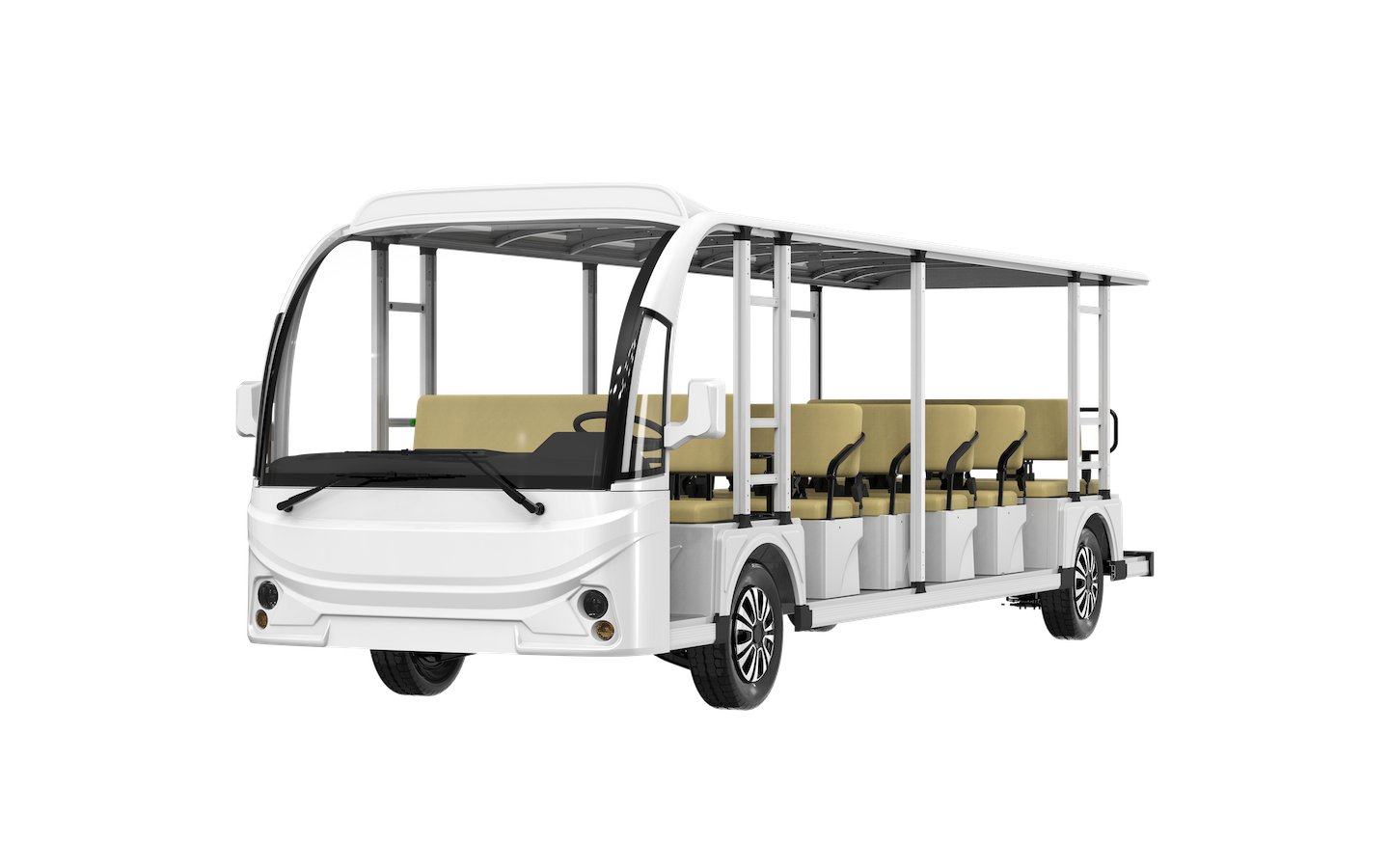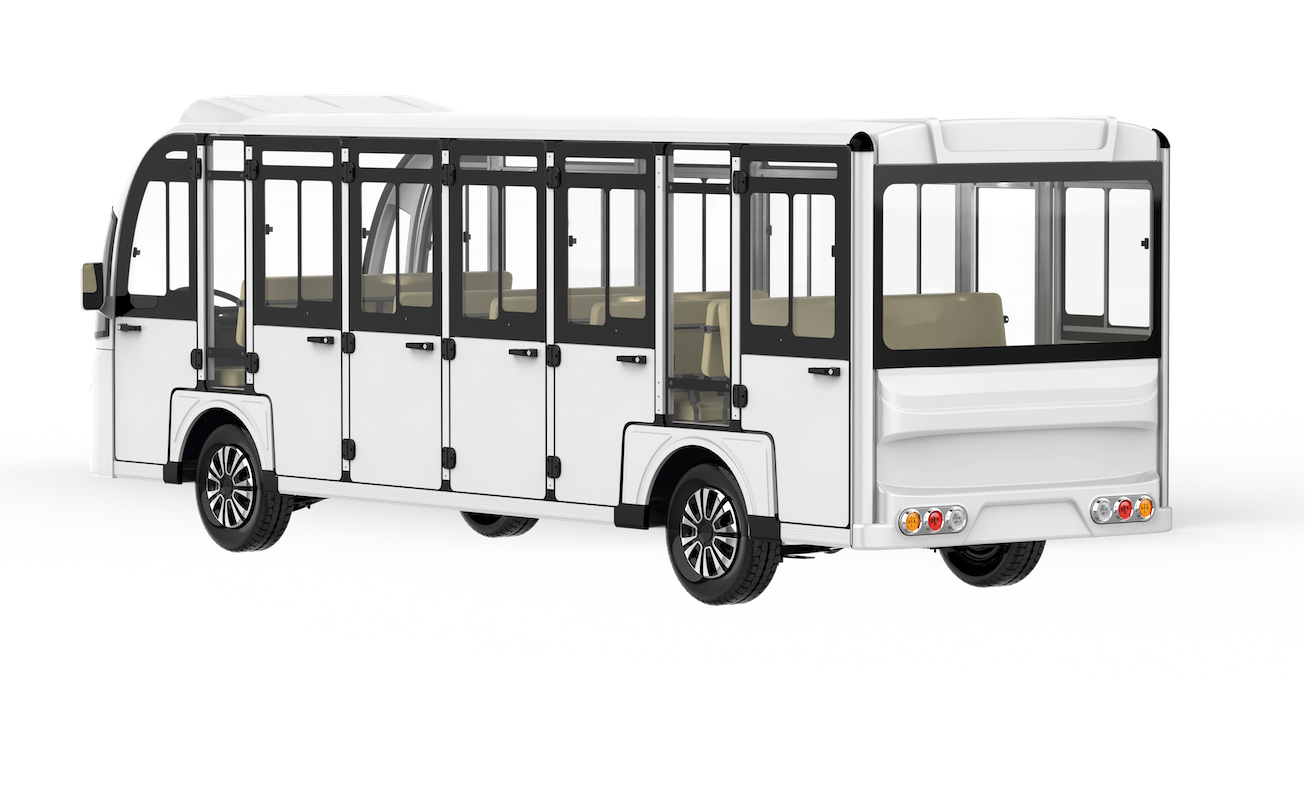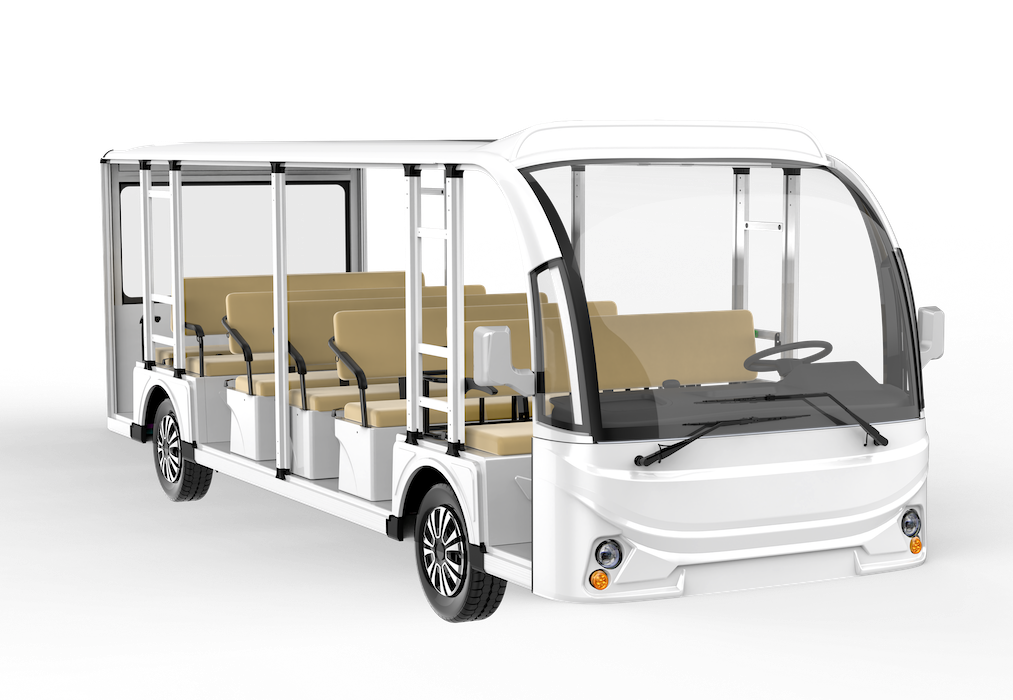Content Menu
● The Environmental Impact of Electric Sightseeing Buses
>> Reducing Carbon Emissions
>> Noise Pollution Reduction
>> Promoting Sustainable Tourism
● Economic Advantages of Electric Sightseeing Buses
>> Cost Savings on Fuel and Maintenance
>> Job Creation in the Green Economy
>> Attracting Investment and Partnerships
● Enhancing the Tourist Experience
>> Comfort and Convenience
>> Customizable Tour Options
>> Educational Opportunities
● Challenges and Considerations
>> Infrastructure Development
>> Initial Investment Costs
>> Public Perception and Acceptance
● Frequently Asked and Questions regarding Electric Sightseeing Bus
>> 1. What are the best practices for maintaining electric sightseeing buses?
>> 2. How do electric sightseeing buses compare to hydrogen fuel cell buses?
>> 3. What are some innovative technologies being integrated into electric sightseeing buses?
>> 4. How do electric sightseeing buses impact local businesses near tourist attractions?
>> 5. What are the challenges cities face when implementing electric sightseeing buses?
In recent years, the rise of electric vehicles has transformed various sectors, including public transportation and tourism. Among these innovations, electric sightseeing buses have emerged as a popular choice for cities looking to enhance their tourism offerings while promoting sustainability. This article explores the numerous benefits of electric sightseeing buses, focusing on their environmental impact, economic advantages, and the overall enhancement of the tourist experience.
The Environmental Impact of Electric Sightseeing Buses
Reducing Carbon Emissions
One of the most significant advantages of electric sightseeing buses is their ability to reduce carbon emissions. Traditional diesel buses contribute to air pollution and greenhouse gas emissions, which are detrimental to both public health and the environment. In contrast, electric buses produce zero tailpipe emissions, making them a cleaner alternative. By adopting electric sightseeing buses, cities can significantly lower their carbon footprint and contribute to global efforts to combat climate change. This shift not only helps in meeting local and international environmental regulations but also aligns with the goals of various climate agreements aimed at reducing global warming. Furthermore, the reduction in emissions can lead to improved air quality, which benefits the health of residents and tourists alike, creating a more pleasant atmosphere for everyone.
Noise Pollution Reduction
Electric buses operate much more quietly than their diesel counterparts. This reduction in noise pollution is particularly beneficial in urban areas where tourism often intersects with residential neighborhoods. The serene experience provided by electric buses allows tourists to enjoy the sights and sounds of the city without the disruptive noise of traditional buses. This quieter operation enhances the overall atmosphere of tourist attractions, making them more enjoyable for visitors and locals alike. Additionally, the reduction in noise pollution can lead to a more peaceful environment, encouraging outdoor activities and social interactions in public spaces. As cities become more livable, they can attract a wider range of tourists who appreciate a tranquil setting.
Promoting Sustainable Tourism
The adoption of electric sightseeing buses aligns with the growing trend of sustainable tourism. Tourists are increasingly seeking eco-friendly travel options, and cities that invest in electric buses can position themselves as leaders in sustainable tourism. By promoting electric sightseeing buses, cities can attract environmentally conscious travelers who prioritize sustainability in their travel choices. This shift not only benefits the environment but also enhances the city's reputation as a forward-thinking destination. Moreover, cities can leverage this commitment to sustainability in their marketing strategies, appealing to a demographic that values responsible travel. By showcasing their electric bus initiatives, cities can differentiate themselves in a competitive tourism market, potentially leading to increased visitor numbers and longer stays.

Economic Advantages of Electric Sightseeing Buses
Cost Savings on Fuel and Maintenance
While the initial investment in electric buses may be higher than that of traditional buses, the long-term savings can be substantial. Electric buses are generally more efficient and have lower operating costs. The cost of electricity is often significantly lower than diesel fuel, leading to reduced fuel expenses. Additionally, electric buses require less maintenance due to fewer moving parts, resulting in lower repair costs over time. These savings can be reinvested into other areas of the tourism sector, further enhancing the city's offerings. For instance, funds saved on fuel and maintenance can be redirected towards improving tourist attractions, enhancing marketing efforts, or even subsidizing ticket prices for visitors. This reinvestment can create a positive feedback loop, where improved services attract more tourists, leading to further economic benefits.
Job Creation in the Green Economy
The transition to electric sightseeing buses can also create jobs in the green economy. As cities invest in electric bus infrastructure, there is a growing demand for skilled workers to manufacture, maintain, and operate these vehicles. This shift not only supports local economies but also contributes to the development of a workforce skilled in sustainable technologies. By fostering job creation in the green sector, cities can stimulate economic growth while promoting environmental responsibility. Furthermore, training programs can be established to equip local residents with the necessary skills, ensuring that the benefits of this transition are felt within the community. This approach not only enhances local employment opportunities but also fosters a sense of pride among residents who contribute to a greener future.
Attracting Investment and Partnerships
Cities that embrace electric sightseeing buses may attract investment from companies focused on sustainability and innovation. Partnerships with electric vehicle manufacturers, charging infrastructure providers, and technology firms can lead to collaborative projects that enhance the overall tourist experience. These partnerships can also provide cities with access to cutting-edge technologies and resources, further solidifying their position as leaders in sustainable tourism. Additionally, by showcasing successful electric bus initiatives, cities can attract further investment from both public and private sectors, creating a robust ecosystem that supports ongoing innovation. This cycle of investment and innovation can lead to the development of new tourist attractions and services, further enhancing the city's appeal.
Enhancing the Tourist Experience
Comfort and Convenience
Electric sightseeing buses are designed with passenger comfort in mind. Many models feature spacious interiors, comfortable seating, and large windows that provide excellent views of the surrounding scenery. This focus on comfort enhances the overall tourist experience, allowing visitors to relax and enjoy their journey. Additionally, electric buses often come equipped with modern amenities such as Wi-Fi and charging ports, making them a convenient choice for tech-savvy travelers. The ability to stay connected while exploring a new city can significantly enhance the tourist experience, allowing visitors to share their adventures in real-time on social media. Furthermore, the comfortable environment encourages tourists to spend more time on the bus, potentially leading to longer tours and increased engagement with the city's attractions.
Customizable Tour Options
Electric sightseeing buses can be easily adapted to meet the needs of different tourist groups. Cities can offer a variety of tour options, including guided tours, hop-on-hop-off services, and themed experiences. This flexibility allows tourists to tailor their experiences to their interests, whether they are exploring historical landmarks, cultural attractions, or natural wonders. By providing customizable tour options, cities can enhance the overall appeal of their tourism offerings. Additionally, the ability to cater to diverse interests can attract a wider range of visitors, from families to solo travelers, ensuring that everyone finds something that resonates with them. This adaptability can also lead to increased customer satisfaction, as tourists feel that their unique preferences are being acknowledged and catered to.
Educational Opportunities
Electric sightseeing buses can also serve as platforms for education and awareness. Many cities are incorporating educational components into their tours, providing information about local history, culture, and environmental sustainability. This educational aspect not only enriches the tourist experience but also fosters a greater appreciation for the destination. Tourists are more likely to engage with the local community and support sustainable practices when they understand the significance of their surroundings. Furthermore, educational tours can be designed to include local experts or historians, providing visitors with deeper insights and fostering a connection to the community. This approach not only enhances the tourist experience but also encourages responsible tourism, where visitors leave with a greater understanding of their impact on the environment and local culture.

Challenges and Considerations
Infrastructure Development
While the benefits of electric sightseeing buses are clear, cities must also consider the challenges associated with their implementation. One of the primary challenges is the development of the necessary infrastructure, including charging stations and maintenance facilities. Cities must invest in these resources to ensure the successful operation of electric buses. Collaboration with local governments, businesses, and utility providers can help facilitate this process and create a robust infrastructure for electric transportation. Additionally, cities may need to conduct feasibility studies to determine the best locations for charging stations, ensuring that they are accessible and convenient for both buses and tourists. By proactively addressing infrastructure needs, cities can create a seamless experience for both operators and passengers.
Initial Investment Costs
The initial investment required for electric sightseeing buses can be a barrier for some cities. While the long-term savings are significant, the upfront costs of purchasing electric buses and installing charging infrastructure can be daunting. Cities may need to explore funding options, such as grants, public-private partnerships, or government incentives, to offset these costs. By securing financial support, cities can make the transition to electric buses more feasible and sustainable. Furthermore, cities can engage in community fundraising initiatives or seek sponsorships from local businesses, creating a sense of ownership and involvement among residents. This collaborative approach can not only alleviate financial burdens but also foster community support for the initiative.
Public Perception and Acceptance
Public perception plays a crucial role in the success of electric sightseeing buses. Some individuals may be hesitant to embrace new technologies or may have concerns about the reliability and performance of electric vehicles. Cities must engage in public outreach and education campaigns to address these concerns and promote the benefits of electric buses. By fostering a positive perception of electric transportation, cities can encourage greater acceptance and support from the community. Additionally, cities can organize trial runs or demonstrations to allow residents and tourists to experience the benefits of electric buses firsthand. This hands-on approach can help dispel myths and build trust in the technology, ultimately leading to a more supportive environment for electric transportation initiatives.
Electric sightseeing buses represent a significant advancement in urban tourism, offering numerous benefits for cities, tourists, and the environment. By reducing carbon emissions, enhancing the tourist experience, and promoting sustainable practices, electric buses can transform the way cities approach tourism. While challenges exist, the potential rewards far outweigh the obstacles. As cities continue to evolve and adapt to the demands of modern tourism, electric sightseeing buses will undoubtedly play a pivotal role in shaping the future of urban travel. Embracing this innovative transportation solution not only benefits the environment but also enhances the overall experience for tourists, making cities more attractive and sustainable destinations. By investing in electric sightseeing buses, cities can pave the way for a greener, more enjoyable future for both residents and visitors alike.

Frequently Asked and Questions regarding Electric Sightseeing Bus
1. What are the best practices for maintaining electric sightseeing buses?
Best practices for maintaining electric sightseeing buses include regular inspections of the battery and electrical systems, ensuring proper charging protocols are followed, keeping the bus clean to prevent wear and tear, and scheduling routine software updates for any onboard technology. Additionally, training staff on the specific maintenance needs of electric vehicles is crucial for optimal performance.
2. How do electric sightseeing buses compare to hydrogen fuel cell buses?
Electric sightseeing buses are powered by batteries that store electricity, while hydrogen fuel cell buses generate electricity through a chemical reaction between hydrogen and oxygen. Electric buses typically have lower operational costs and are easier to maintain, but hydrogen buses can offer longer ranges and faster refueling times. The choice between the two often depends on the specific needs of the city and its infrastructure.
3. What are some innovative technologies being integrated into electric sightseeing buses?
Innovative technologies in electric sightseeing buses include advanced battery management systems for improved efficiency, regenerative braking systems that recharge the battery during braking, GPS tracking for real-time location updates, and onboard Wi-Fi for passenger connectivity. Some buses also feature augmented reality displays that provide tourists with interactive information about landmarks.
4. How do electric sightseeing buses impact local businesses near tourist attractions?
Electric sightseeing buses can positively impact local businesses by increasing foot traffic in tourist areas. As more tourists visit attractions via electric buses, nearby shops, restaurants, and services may see a boost in sales. Additionally, the eco-friendly image of electric buses can attract environmentally conscious consumers who prefer to support local businesses that align with their values.
5. What are the challenges cities face when implementing electric sightseeing buses?
Cities face several challenges when implementing electric sightseeing buses, including the high initial costs of purchasing the buses and installing charging infrastructure, the need for adequate training for staff, and potential public skepticism regarding the reliability of electric vehicles. Additionally, cities must ensure that the necessary infrastructure, such as charging stations, is strategically located to support the operational needs of the buses.










































